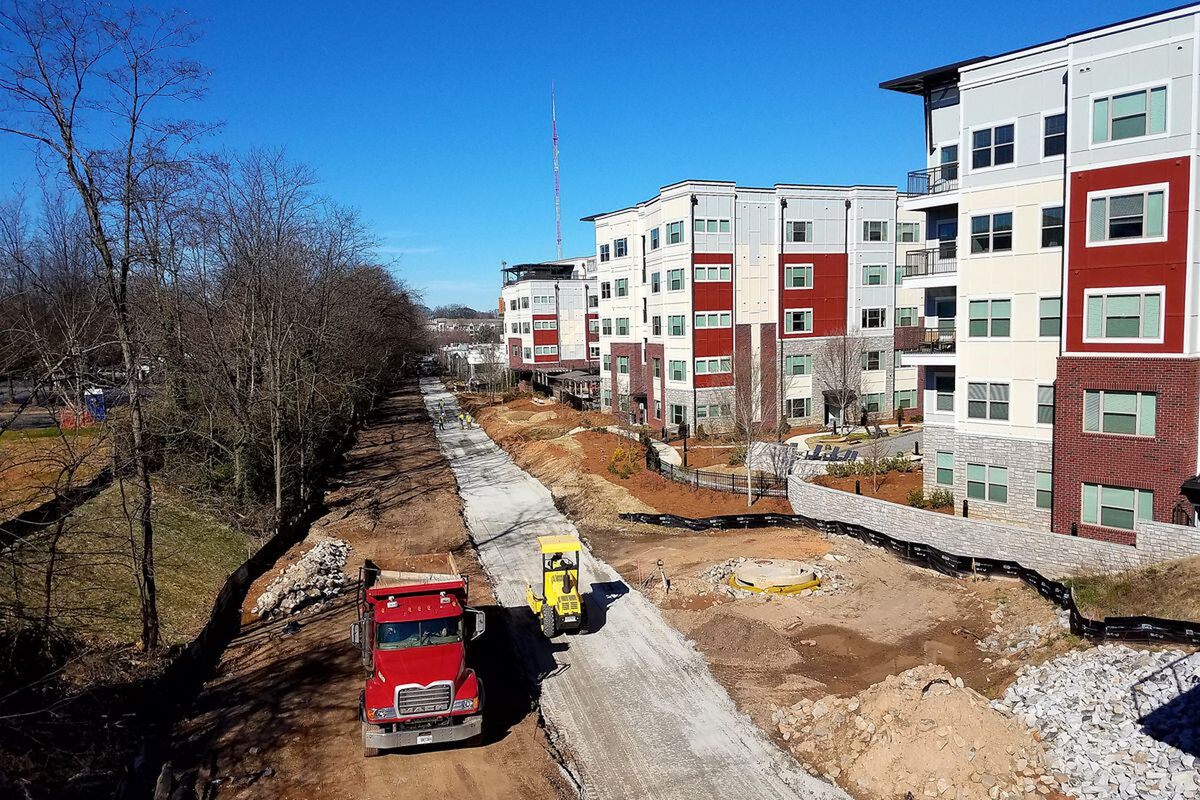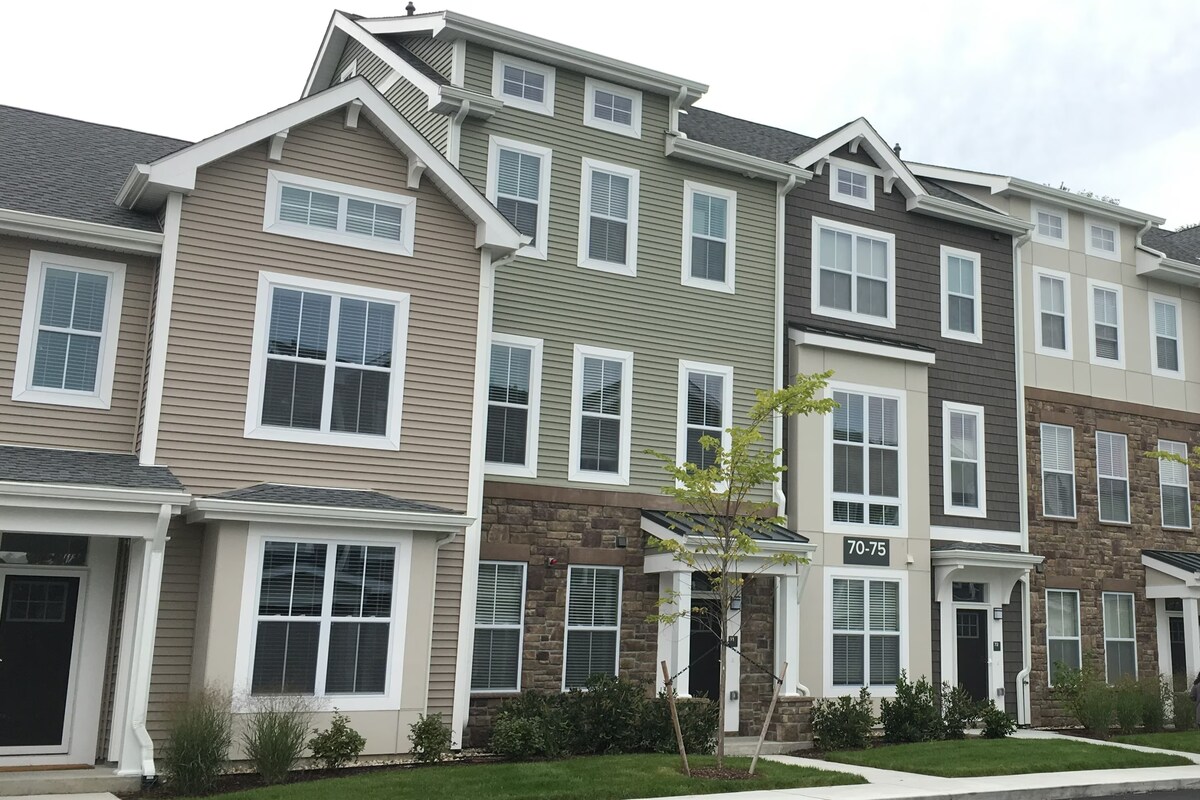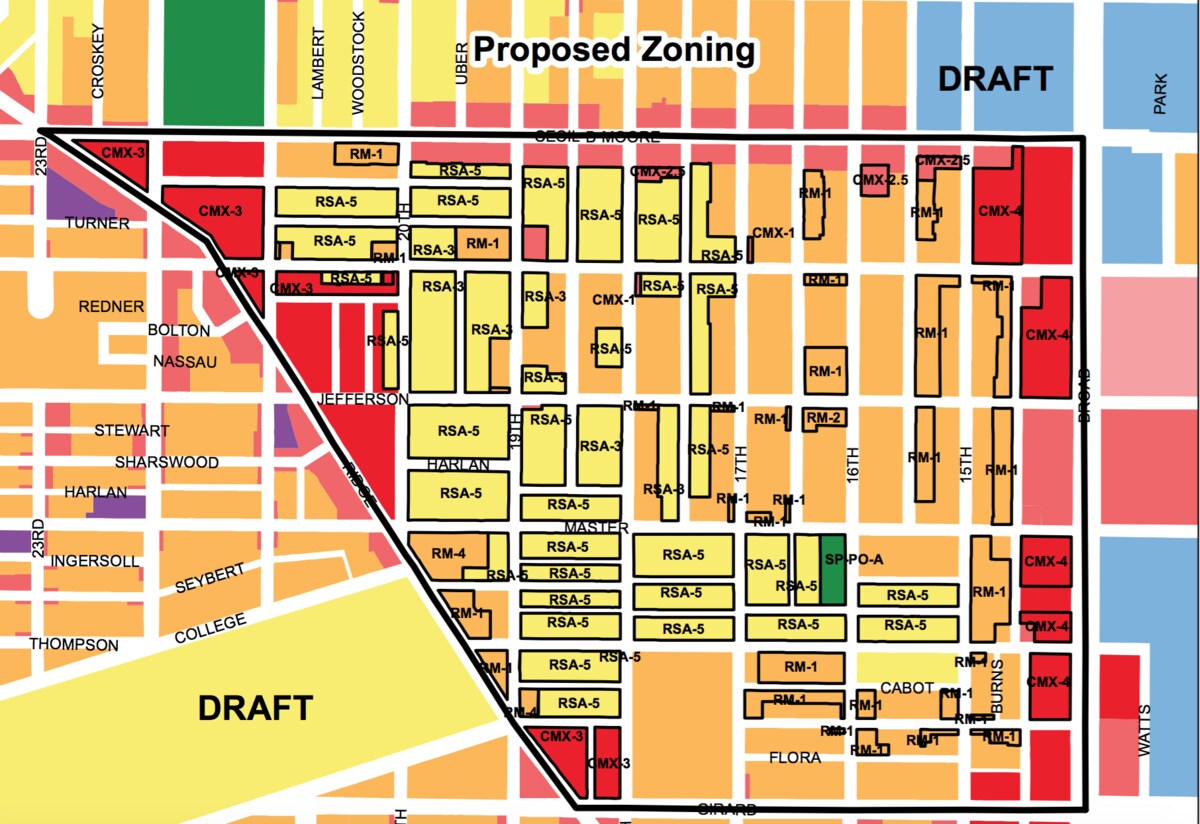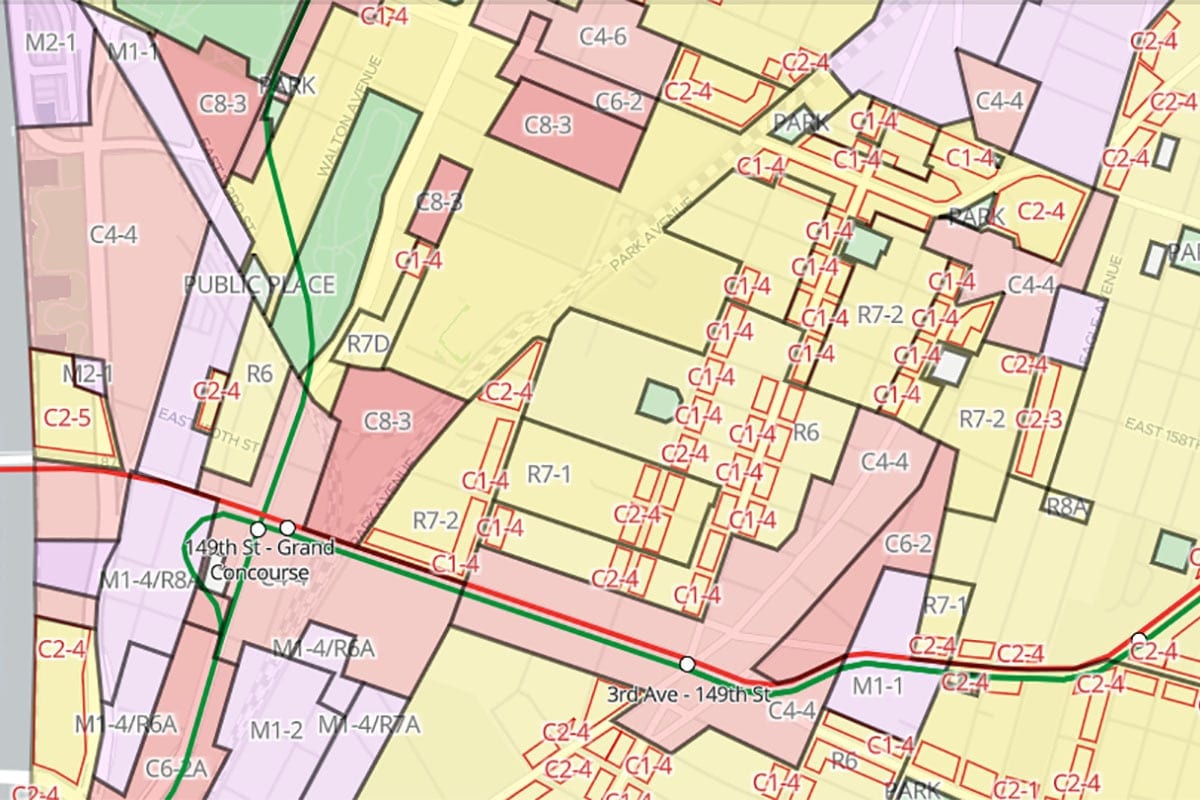Home>diy>Planning & Engineering>What Is Inclusionary Zoning


Planning & Engineering
What Is Inclusionary Zoning
Modified: August 27, 2024
Learn how planning and engineering are integrated in inclusionary zoning policies and their impact on affordable housing in this comprehensive guide.
(Many of the links in this article redirect to a specific reviewed product. Your purchase of these products through affiliate links helps to generate commission for Storables.com, at no extra cost. Learn more)
Introduction
Inclusionary zoning is a planning policy that aims to address the issue of affordable housing within communities. It requires developers to include a certain percentage of affordable units in new housing developments or provide financial contributions towards affordable housing initiatives. This approach seeks to create mixed-income neighborhoods and ensure that people of diverse socioeconomic backgrounds have access to safe and affordable housing.
Throughout history, cities and communities have faced challenges in providing affordable housing options for their residents. Rising housing costs and limited affordable housing stock have led to housing inequality and created barriers for low-income individuals and families. In response to this issue, inclusionary zoning has emerged as a popular strategy to promote affordable housing and foster more equitable communities.
The concept of inclusionary zoning has its roots in the 1970s, as a response to the growing concern about the lack of affordable housing in the United States. Cities such as Berkeley, California, and Montgomery County, Maryland, were early adopters of inclusionary zoning policies, which later served as models for other jurisdictions.
The main objective of inclusionary zoning is to address the affordable housing crisis and create more inclusive communities. By mandating the inclusion of affordable housing units or contributions, this policy helps prevent the displacement of low-income populations and provides them with an opportunity to live in neighborhoods with better amenities and services. Moreover, inclusionary zoning can help to mitigate the social, economic, and environmental impacts associated with concentrated poverty by promoting socioeconomic diversity.
Inclusionary zoning typically consists of several key components. First, it establishes the required percentage of affordable units that developers must include in their projects or sets the financial contribution they must make. Second, it outlines the income eligibility criteria to determine who can qualify for affordable housing units. Third, it may include guidelines for design standards and regulations to ensure that affordable units match the overall quality of the development.
Implementing inclusionary zoning can bring a wealth of benefits to both individuals and communities. For individuals and families struggling with housing affordability, it provides an opportunity to access safe, decent, and affordable housing options. Affordable housing units created through inclusionary zoning policies can help address housing shortages and prevent the displacement of vulnerable populations.
From a community perspective, inclusionary zoning helps create mixed-income neighborhoods, promoting diversity and fostering a sense of community. It can contribute to reducing income segregation and promoting equal access to amenities and services. Inclusionary zoning also supports the goals of sustainable development, as it encourages the efficient use of land and promotes a well-balanced and diverse housing market.
Despite its potential advantages, inclusionary zoning has faced criticism and challenges. Some argue that it can impose additional costs on developers, potentially leading to higher housing prices for market-rate units. Others raise concerns about the long-term financial viability of affordable units and the potential for unintended consequences, such as a reduction in overall housing supply.
Overall, inclusionary zoning serves as a valuable tool in addressing the affordable housing crisis and promoting equitable communities. By planning and implementing effective inclusionary zoning policies, cities and communities can take a positive step towards ensuring that housing is accessible to all residents, regardless of their income level.
Key Takeaways:
- Inclusionary zoning is a powerful policy tool that promotes affordable housing, socioeconomic diversity, and sustainable communities by requiring developers to include affordable units or make financial contributions.
- While inclusionary zoning offers significant benefits, such as increased affordable housing availability and prevention of displacement, it also faces challenges like potential increased housing costs and reduced housing supply. Policymakers must carefully balance these factors when implementing inclusionary zoning policies.
History of Inclusionary Zoning
Inclusionary zoning has its roots in the affordable housing movements of the 1960s and 1970s. As housing costs rose and low-income individuals and families struggled to find suitable accommodations, communities across the United States began exploring policy solutions to address the issue. The concept of inclusionary zoning emerged as one such solution.
One of the pioneering jurisdictions in implementing inclusionary zoning policies was Berkeley, California, which adopted its first affordable housing ordinance in 1973. The ordinance required that large residential developments set aside a percentage of units for low- and moderate-income households.
Another influential jurisdiction was Montgomery County, Maryland. In 1974, Montgomery County became the first county in the United States to require inclusionary zoning with its “MPDU” (Moderately Priced Dwelling Unit) program. This program, which is still in effect today, requires developers of certain residential developments to include a specified percentage of affordable units or make payments in lieu of including the units.
Since these early beginnings, numerous cities and counties across the United States have adopted inclusionary zoning policies. California has been at the forefront of inclusionary zoning efforts, with over 170 jurisdictions in the state having some form of inclusionary zoning policy. Other states, such as New Jersey, Massachusetts, and Oregon, have also implemented statewide inclusionary zoning mandates.
Over time, inclusionary zoning policies have evolved to become more refined and tailored to specific communities. Many jurisdictions have established specific income thresholds to determine eligibility for affordable units, taking into account local median incomes and housing market conditions. Some policies have also incorporated incentives for developers, such as density bonuses or expedited permitting, to encourage participation in the program.
In recent years, inclusionary zoning has gained more prominence as the housing affordability crisis has become increasingly acute in many cities. In response to this crisis, more jurisdictions have adopted or strengthened their inclusionary zoning policies to address the shortage of affordable housing.
It is important to note that the implementation and effectiveness of inclusionary zoning policies can vary widely depending on the jurisdiction. Factors such as local market conditions, political will, and funding availability can all impact the success of these policies.
Looking ahead, the future of inclusionary zoning is likely to involve continuous refinement and adaptation. As the housing landscape continues to change, policymakers and communities will need to innovate and explore additional strategies to address affordable housing needs effectively.
Objectives of Inclusionary Zoning
The primary objectives of inclusionary zoning are centered around addressing the affordable housing crisis and fostering more inclusive and equitable communities. By mandating the inclusion of affordable housing units or financial contributions from developers, inclusionary zoning aims to achieve the following goals:
- Promote Affordable Housing: The main objective of inclusionary zoning is to increase the availability of affordable housing options within communities. It helps ensure that individuals and families of diverse socioeconomic backgrounds have access to safe and affordable housing, reducing the burden of housing costs and preventing the displacement of low-income populations.
- Create Mixed-Income Neighborhoods: Inclusionary zoning seeks to create diverse and inclusive communities by promoting the integration of affordable housing units within market-rate developments. By encouraging the coexistence of households with different income levels, it helps reduce concentrated poverty and fosters socioeconomic diversity, promoting social cohesion and breaking down barriers between various socioeconomic groups.
- Address Housing Inequality: Inclusionary zoning aims to address the disparities in housing opportunities by providing low- and moderate-income households with access to neighborhoods that offer better amenities, services, and educational opportunities. By promoting equal access to quality housing, it helps reduce housing inequality and improve overall social and economic well-being.
- Prevent Gentrification and Displacement: One of the key objectives of inclusionary zoning is to mitigate the displacement of low-income residents in rapidly gentrifying neighborhoods. By requiring affordable housing units in new developments, it helps maintain housing affordability and prevents the involuntary displacement of existing residents due to rising property values and rents caused by gentrification.
- Promote Sustainable Development: Inclusionary zoning aligns with the principles of sustainable development by encouraging the efficient use of land and resources. By promoting mixed-use and mixed-income developments, it helps reduce urban sprawl and its associated negative environmental impacts. Inclusionary zoning also fosters more compact communities with better access to public transportation and amenities, reducing reliance on private vehicles and promoting a healthier and more sustainable lifestyle.
Overall, the objectives of inclusionary zoning are multifaceted and aim to address the complex challenges of housing affordability, social equity, and sustainability. By implementing effective inclusionary zoning policies, communities can take a proactive approach to ensure that housing is accessible to all residents, regardless of their income level, while creating diverse and inclusive neighborhoods that benefit everyone.
Key Components of Inclusionary Zoning
Inclusionary zoning policies typically consist of several key components that outline the requirements and guidelines for developers to include affordable housing units or make financial contributions. The key components of inclusionary zoning include:
- Mandatory Set-Asides: One of the central components of inclusionary zoning is the requirement for developers to set aside a certain percentage of units within a new housing development for affordable housing. This percentage can vary depending on the jurisdiction and may be determined based on factors such as the local housing market conditions, the income distribution of the population, and the overall housing needs of the community.
- Income Eligibility Criteria: Inclusionary zoning policies typically establish specific income eligibility criteria to determine who can qualify for affordable housing units. These criteria often take into account the area median income (AMI) or other relevant income thresholds. By targeting households below a certain income level, the policies ensure that affordable housing units are allocated to those who have the greatest need.
- Developer Incentives: To encourage developer participation in inclusionary zoning programs, jurisdictions may offer various incentives. These incentives can include density bonuses, which allow developers to build additional market-rate units beyond what is typically allowed in exchange for providing affordable units. Other incentives may involve streamlined permitting processes or relief from certain development fees to offset the costs associated with providing affordable housing.
- Alternative Compliance Options: In some cases, inclusionary zoning policies may provide alternative compliance options for developers who are unable to include affordable housing units on-site. This can include allowing developers to make financial contributions to an affordable housing fund or partner with other affordable housing providers to fulfill their obligations. These alternative options ensure flexibility and can help maximize the effectiveness of inclusionary zoning policies.
- Design Standards and Regulations: In addition to the number and eligibility of affordable units, inclusionary zoning policies often include design standards and regulations to ensure that the quality of the affordable housing units matches that of the overall development. These standards may cover aspects such as size, layout, amenities, and accessibility to ensure that affordable units are of comparable quality to market-rate units.
The specific components and details of inclusionary zoning policies can vary greatly from one jurisdiction to another. Different communities may adopt different approaches based on their unique needs and circumstances. It is important for policymakers to consider local housing market conditions, community priorities, and potential impacts on development feasibility when designing the key components of their inclusionary zoning policies.
By establishing clear and comprehensive guidelines, inclusionary zoning policies can effectively ensure the inclusion of affordable housing within new developments, promote socioeconomic diversity, and provide opportunities for low- and moderate-income households to access safe and affordable housing.
Benefits of Inclusionary Zoning
Inclusionary zoning policies offer a range of benefits for individuals, communities, and the overall housing market. By mandating the inclusion of affordable housing units or financial contributions from developers, inclusionary zoning fosters more equitable and inclusive communities while addressing the affordable housing crisis. The benefits of inclusionary zoning include:
- Increased Affordable Housing Availability: Inclusionary zoning significantly increases the supply of affordable housing units within communities. By requiring developers to include affordable units in their projects, more low- and moderate-income households have access to safe, decent, and affordable housing options. This helps reduce the burden of housing costs and offers greater housing security for vulnerable populations.
- Socioeconomic Diversity and Inclusive Communities: Inclusionary zoning promotes the creation of mixed-income neighborhoods, bringing together residents from various socioeconomic backgrounds. This diversity fosters a sense of community, breaks down social barriers, and encourages interaction among different income groups. Inclusive communities provide opportunities for social and economic mobility, promote social cohesion, and reduce the stigma often associated with affordable housing.
- Prevention of Displacement and Gentrification: Inclusionary zoning policies help mitigate the displacement of low-income residents caused by gentrification or rising housing costs. By ensuring the availability of affordable housing units within new developments, residents are better able to remain in their neighborhoods, preventing the erosion of community fabric and fostering social stability.
- Reduced Housing Inequality: Inclusionary zoning is a step towards reducing housing inequality by promoting equal access to housing opportunities. It provides low- and moderate-income households with the chance to live in neighborhoods with better amenities, services, and educational opportunities that are otherwise out of reach due to affordability constraints. This helps level the playing field and create more equitable living environments.
- Promotion of Sustainable and Compact Development: Inclusionary zoning aligns with the principles of sustainable development by encouraging more compact and walkable communities. By promoting mixed-use developments that incorporate affordable housing, people can live closer to their workplaces, reducing commuting distances and decreasing reliance on private vehicles. This leads to reduced traffic congestion, lower carbon emissions, and improved air quality, contributing to a more sustainable future.
- Fostering Economic Development: Inclusionary zoning policies can also contribute to local economic development. By creating affordable housing opportunities, communities attract a diverse range of residents, including employees in various industries. This can help support local businesses, spur local spending, and contribute to the overall economic vitality of the community.
The benefits of inclusionary zoning extend beyond the individuals and communities directly impacted by the policies. By promoting housing affordability and social equity, inclusionary zoning contributes to the overall health and stability of the housing market. It helps to prevent housing shortages and reduce market distortions, creating a more balanced and equitable housing landscape for everyone.
While inclusionary zoning may face challenges and criticism, the benefits it offers in terms of affordable housing, socioeconomic diversity, and inclusive communities make it a valuable tool for creating thriving and equitable neighborhoods.
Inclusionary zoning is a policy that requires a certain percentage of new housing developments to be affordable for low to moderate income households. It can help create more diverse and inclusive communities.
Read more: What Is Forest Zoning?
Criticisms of Inclusionary Zoning
While inclusionary zoning policies have gained popularity as a tool to address the affordable housing crisis, they are not without criticisms. Critics argue that these policies have limitations and can lead to unintended consequences. The criticisms of inclusionary zoning include:
- Increased Housing Costs: One of the primary criticisms of inclusionary zoning is that it can raise the overall cost of housing. Developers argue that the requirement to include affordable units or make financial contributions adds to their development costs, which they may pass on to buyers or renters of market-rate units. This can potentially exacerbate housing affordability issues and make it more challenging for middle-income households to afford housing.
- Reduced Housing Supply: Critics argue that inclusionary zoning can discourage new housing development. The additional costs and regulations associated with including affordable units may make projects financially unviable for developers. As a result, they may opt against developing projects or scale them down, leading to a reduction in the overall housing supply. This can put further pressure on housing affordability and may limit options for all income groups.
- Geographic Concentration of Affordable Units: Inclusionary zoning policies often result in the clustering of affordable housing units in specific areas. This concentration can create pockets of poverty and lead to the stigmatization of affordable housing residents. Critics argue that it is important to disperse affordable units more widely throughout communities to avoid perpetuating the segregation of low-income households.
- Challenges with Long-Term Affordability: Some critics raise concerns about the long-term affordability of units created through inclusionary zoning. Affordability requirements may be tied to initial sale prices or rental rates, but over time, market forces can drive up costs. This can result in the loss of affordability and limit the long-term benefits of inclusionary zoning policies.
- Viability for Small-Scale Development: Inclusionary zoning policies may disproportionately impact small-scale developers who may not have the financial resources to comply with affordable housing requirements. Critics argue that these policies can create barriers to entry and hinder the growth of smaller developers, potentially limiting housing options and impeding market competition.
- Administrative Burden: Designing and implementing effective inclusionary zoning policies require administrative resources and expertise. Critics argue that the bureaucratic processes associated with compliance and monitoring can be complex and burdensome, especially for smaller jurisdictions or those with limited capacity.
It is important to acknowledge and address these criticisms when designing and implementing inclusionary zoning policies. By carefully considering the potential impacts and finding ways to mitigate challenges, policymakers can create more effective and balanced inclusionary zoning programs.
Ultimately, finding the right balance between promoting affordable housing and addressing the concerns raised by critics is essential to ensure that inclusionary zoning is a viable and sustainable tool in providing housing opportunities for all.
Case Studies on Inclusionary Zoning
Several case studies provide valuable insights into the effectiveness and impacts of inclusionary zoning policies in different jurisdictions. These case studies highlight the diverse approaches and outcomes of inclusionary zoning in various contexts. Here are a few notable examples:
- Montgomery County, Maryland: Montgomery County’s inclusionary zoning program, known as the Moderately Priced Dwelling Unit (MPDU) program, has been in place since 1974. The program requires that a certain percentage of units in new developments be designated as affordable housing. This policy has led to the creation of thousands of affordable units and has been instrumental in maintaining socioeconomic diversity within the county. The MPDU program continues to be seen as a national model for inclusionary zoning.
- Boulder, Colorado: Boulder implemented its inclusionary housing ordinance in 1994. The policy requires new developments with ten or more units to set aside a certain percentage of units as permanently affordable housing. The program has been successful in creating affordable housing opportunities in a high-cost market. However, challenges have emerged, such as the concentration of affordable units in certain areas and the need to continuously adapt the policy to address changing market conditions.
- San Francisco, California: San Francisco has a long history of implementing inclusionary zoning policies to address its affordable housing crisis. The city requires new residential developments to include a percentage of affordable units or contribute to an affordable housing fund. While the program has resulted in the creation of affordable housing units, critics argue that it has not done enough to address the scale of the affordability challenge in the city.
- Cambridge, Massachusetts: Cambridge has a robust inclusionary zoning policy that requires developers to include affordable units or make financial contributions. The policy has been successful in creating affordable housing opportunities and promoting socioeconomic diversity within the city. However, challenges arise in balancing the demands of affordable housing with the need for overall housing development and ensuring long-term affordability of units.
- Denver, Colorado: Denver’s inclusionary housing policy requires developers to set aside a percentage of units as affordable or make financial contributions. The policy has resulted in the creation of affordable housing units in various neighborhoods. However, challenges have emerged in implementing the policy uniformly across the city, and debates continue on the appropriate level of affordability requirements.
These case studies demonstrate the diversity of approaches and outcomes of inclusionary zoning policies in different jurisdictions. While some have seen success in promoting affordable housing and creating inclusive communities, others have faced challenges related to housing costs, long-term affordability, and implementation. Lessons learned from these case studies can help inform best practices and improve future inclusionary zoning policies.
It is important for policymakers to carefully consider the unique characteristics and needs of their communities when designing and implementing inclusionary zoning programs. By learning from the experiences of other jurisdictions, they can tailor their policies to best address local housing challenges and ensure positive outcomes for both residents and developers.
Best Practices for Implementing Inclusionary Zoning
Implementing effective inclusionary zoning policies requires careful planning and consideration of various factors. To ensure their success and maximize their impact, here are some best practices that jurisdictions can follow:
- Set Realistic and Flexible Requirements: When establishing inclusionary zoning requirements, it is essential to conduct a thorough analysis of local housing market conditions, affordability gaps, and development feasibility. Setting realistic goals and percentages that reflect the local context and taking into account factors such as the cost of development, land values, and construction costs, can help ensure that developers can comply with the requirements without diminishing the viability of projects.
- Offer Developer Incentives: Providing incentives to developers can encourage participation and compliance with inclusionary zoning policies. Incentives can include density bonuses, expedited permitting processes, or relief from certain development fees. These incentives can help offset the costs associated with affordable housing requirements and incentivize developers to participate in the program.
- Prioritize Geographic Distribution: To promote socioeconomic diversity and avoid concentration of affordable units in specific neighborhoods, jurisdictions should consider strategies to distribute affordable housing across different areas. This can include requiring developers to incorporate affordable units in various developments throughout the community or offering incentives for the inclusion of affordable units in higher-cost areas.
- Ensure Long-Term Affordability: To maintain the long-term affordability of inclusionary housing units, jurisdictions should implement mechanisms to ensure permanent affordability. This can include the use of deed restrictions, income certification processes, and resale formulas that control the future sale or rental prices of affordable units. Regular monitoring and enforcement can help ensure compliance and prevent the loss of affordability over time.
- Consider Alternatives for Small-Scale Development: Recognize the potential challenges faced by small-scale developers in complying with inclusionary zoning requirements. Design provisions that provide alternatives, such as allowing financial contributions or encouraging partnerships with affordable housing providers, to ensure that smaller projects are not disproportionately impacted.
- Stakeholder Engagement and Public Outreach: Engage with stakeholders, including developers, community organizations, and residents, throughout the process of developing and implementing inclusionary zoning policies. Seek input and feedback to ensure that the policies align with the needs of the community and gain public support. Transparent communication and public outreach are vital for promoting understanding and acceptance of inclusionary zoning initiatives.
- Monitor and Evaluate the Impact: Continuously monitor and evaluate the impact of inclusionary zoning policies to assess their effectiveness and make necessary adjustments. Regularly review compliance rates, affordable housing production, income targeting, and long-term affordability to determine if the policies are achieving the desired outcomes. Evaluation can help identify any potential issues and inform future improvements to the program.
Implementing inclusionary zoning policies requires a comprehensive and adaptable approach that considers local market conditions and community needs. By following these best practices, jurisdictions can increase the chances of success in promoting affordable housing, creating inclusive communities, and addressing the housing challenges faced by their residents.
Challenges and Limitations of Inclusionary Zoning
While inclusionary zoning is a widely recognized strategy to address the affordable housing crisis, it is not without challenges and limitations. Understanding these challenges is crucial for policymakers to design effective policies and mitigate any potential negative impacts. The main challenges and limitations of inclusionary zoning include:
- Financial Feasibility: Inclusionary zoning policies can impose additional costs on developers, potentially leading to increased housing prices for market-rate units. Developers may need to navigate complex financial calculations to ensure that their projects remain financially viable. Striking a balance between creating affordable units and maintaining market-rate housing affordability is essential to ensure the success of the policy.
- Reduced Housing Supply: Requiring developers to provide affordable units or make financial contributions can deter some developers from initiating projects or lead to smaller-scale developments. This reduction in housing supply can exacerbate existing shortages and limit options for all income groups, potentially driving up housing costs and worsening the affordability crisis.
- Concentration of Affordable Units: In some cases, inclusionary zoning can lead to clustering of affordable units in certain neighborhoods. This can inadvertently perpetuate the segregation of low-income households and create pockets of poverty. Policymakers should design policies that prioritize dispersal of affordable units across various neighborhoods to promote socioeconomic diversity and prevent the stigmatization of residents in affordable housing.
- Long-Term Affordability: Ensuring the long-term affordability of units created through inclusionary zoning can be challenging. Affordability requirements may be tied to initial sale prices or rental rates, but over time, these rates may increase due to market forces. Without adequate measures to maintain affordability, there is a risk that units designed for low-income households may become unaffordable, limiting the long-term benefits of inclusionary zoning policies.
- Administrative Complexity: Implementing inclusionary zoning policies can be administratively complex and resource-intensive for local governments. Establishing eligibility criteria, monitoring compliance, and ensuring enforcement require dedicated staff and expertise. Smaller jurisdictions or those with limited administrative capacity may face challenges in managing the program effectively.
- Legal Considerations: Inclusionary zoning policies need to align with legal frameworks and regulations, which vary by jurisdiction. Legal challenges can arise, including potential legal disputes by developers who may perceive the policies as burdensome or infringing on their property rights. It is crucial for policymakers to navigate and address legal considerations to ensure that inclusionary zoning policies are legally sound and enforceable.
Addressing these challenges requires careful consideration and thoughtful policy design. Policymakers should conduct comprehensive feasibility studies, engage stakeholders, and make necessary revisions based on local market conditions and community needs. A balanced approach that considers the interests of developers, residents, and the broader housing market is crucial to ensure that inclusionary zoning policies effectively address the affordable housing crisis without unintended negative consequences.
Despite these challenges, inclusionary zoning remains an important tool in promoting affordable housing and creating more equitable communities. By addressing these limitations and continuously refining policies, jurisdictions can maximize the positive impacts of inclusionary zoning and contribute to a more inclusive and affordable housing landscape.
Read more: What Is Zoning For A School
Conclusion
Inclusionary zoning is a valuable planning tool that aims to address the affordable housing crisis and create more inclusive communities. By requiring developers to include affordable housing units or make financial contributions, inclusionary zoning promotes housing affordability, socioeconomic diversity, and the creation of thriving neighborhoods for people of diverse income levels.
Throughout its history, inclusionary zoning has been implemented in various jurisdictions, with each one adapting the policy to meet their local needs and market conditions. Case studies from different cities and counties display the range of outcomes and challenges associated with inclusionary zoning, underscoring the importance of context-sensitive policy design.
While inclusionary zoning offers significant benefits, it is not without criticisms and limitations. Concerns about increased housing costs, potential reductions in housing supply, clustering of affordable units, and long-term affordability challenges underscore the need for careful and balanced policy design. Addressing these challenges involves setting realistic requirements, offering developer incentives, diversifying affordable housing locations, ensuring long-term affordability, navigating legal considerations, and engaging stakeholders throughout the process.
Despite these challenges, inclusionary zoning remains a crucial strategy for promoting equitable communities and widening access to safe and affordable housing. By adopting best practices, such as careful feasibility analysis, effective incentives, and ongoing monitoring, jurisdictions can maximize the positive impacts of inclusionary zoning policies while mitigating potential drawbacks.
Ultimately, the success of inclusionary zoning hinges on thoughtful policy design, collaboration between developers and communities, and ongoing evaluation of its impacts. By continuously refining and adapting inclusionary zoning policies, communities can make significant progress in addressing the affordable housing crisis and fostering more inclusive and sustainable neighborhoods.
Frequently Asked Questions about What Is Inclusionary Zoning
Was this page helpful?
At Storables.com, we guarantee accurate and reliable information. Our content, validated by Expert Board Contributors, is crafted following stringent Editorial Policies. We're committed to providing you with well-researched, expert-backed insights for all your informational needs.














0 thoughts on “What Is Inclusionary Zoning”